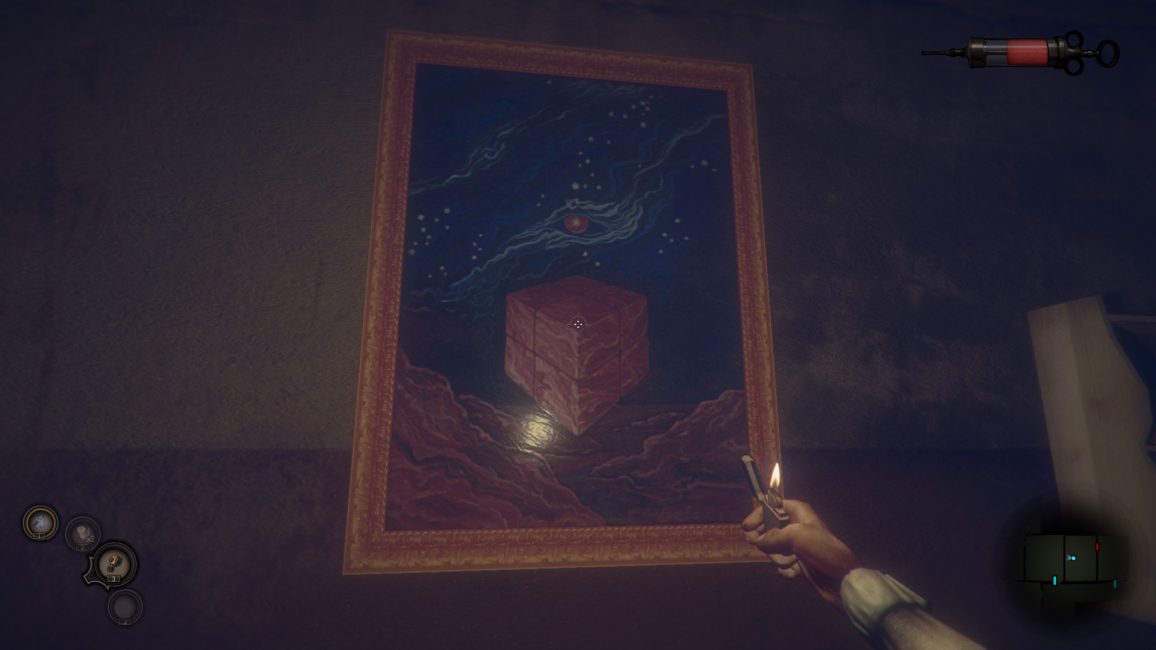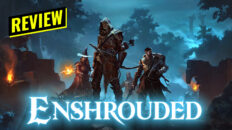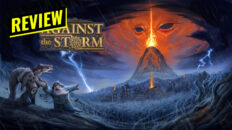Developer: 3D2 Entertainment
Publisher: Nkidu Games Inc.
Reviewed on: PC
Code Received.
Let me start off by saying that I’m absolutely unable to handle horror. Though I do consume a fair share of the genre, thanks to my sister, it’s not hard to scare me silly. So when I got The Crow’s Eye, I wasn’t entirely sure I’d be able to put myself through an experience advertised as psychological-horror. I was wrong.
Set within the dreary confines of Crosswood University, The Crow’s Eye is a tale about ambition. A tale of trying to escape the untrustworthy halls of an abandoned university, and of solving a 20 year old mystery in which the students and faculty went missing. From its description and initial onset, The Crow’s Eye feels like standard horror fare. It’s a rather familiar storyline, but as a game it manages to set itself apart from its comrades in the genre. In some cases, at least.

The Crow’s Eye kicks off with an introduction that might seem familiar, thrusting players into the shoes of an initially unnamed character, without much explanation or direction. The initial goal is simple, escape the university. With such a start, it’s expected that The Crow’s Eye looks and feels the part of other games in this style. The halls and rooms of Crosswood University are sufficiently creepy, grimy and in varying states of disrepair. This place has been like this for a while, abandoned and ignored, and it’s a bit disappointing when most of the university’s interiors begin feeling a little too similar.
There’s more to do than just escape though. After an introduction by one Dr. William Holtwick over the PA system, the game begins to trickle the bindings of a more sinister plot down your throat. An odd letter or note there, the occasional audio log here, and The Crow’s Eye begins revealing the deeper, darker history of Crosswood University. It’s a lot of exposition, but it’s handled well. The handful of characters introduced through these logs and notes are interesting people in themselves, well written and distinct. Evelyn O’Donnell’s sultry voice barely shields her more sinister nature, and Robert Kansas comes off as a jerk you just can’t help but hate. The characters are certainly one of the game’s strongest parts.
The gameplay, however, is a clear indicator that The Crow’s Eye has a bit of an identity issue. There’s a certain feel of Amnesia and BioShock to the game between the university setting and the voice acting, so it’s suddenly rather odd when you walk into something reminiscent of Portal. Aside from a few jump-scares, the game relies more on psychological mind-bending and a heavy dose of puzzle-platforming. In fact, you’re introduced to a recognizable shape early on in the game. It’s something that’ll become a frequent part of the puzzles, and may be eerily familiar to some.

Despite attempts to keep itself firmly rooted in horror, the puzzle-platforming elements of The Crow’s Eye ending up taking over. The puzzles are fairly interesting, ranging from the easy to the mildly frustrating. Once given a little thought they’re not that hard to solve, and if desired one can even brute force their way through a couple of them. There’s an interesting, surreal one where the player has to push around floating cubes into corresponding slots. However, most puzzles simply require manipulating ‘companion cubes’ to form platforms and activate switches.
The cubes aren’t the only thing reminiscent of Portal, though. Later on in the game you’re given access to an electromagnet, a tool that allows access to what’s easily the game’s most fun platforming element. Alright, the electromagnet is absolutely nothing like the Portal Gun, but it is a key tool to get past certain areas. With the electromagnet you’re able to attract or repel yourself from certain metal objects that glow red. While your regular movement made the platforming parts seem clunky, the electromagnet brings about the opposite. There’s just something satisfying about leaping off a platform and attracting yourself to a distant wall, or repelling yourself off the floor to gain higher access. It also comes with a flashlight, shattering your hopes of ever using your lighter ever again.
The initial clunky platforming aside, a couple of other things seem to hold the game back or seem out of place. On top of the mystery and the platforming, a crafting system exists as well. Crafting is clearly underutilized, and the bare handful of items to craft could easily have just been replaced by their final products. It’s odd having to craft bandages and lock picks, especially with how infrequently they are used. The lock picking minigame is awkward, and thankfully very rare. Bandages and the health bar seem out of place as well. The only damage you can take is falling during the platforming sections, and even that is minimal. It feels like at some point enemies and horror-survival elements were planned for the game, but were eventually scrapped.
While the mystery continues to thicken with intrigue it also becomes hard to ignore the increasing disparity between the puzzles and the rest of the game. There were parts where it almost felt like the game was using puzzles as padding, including a somewhat annoying fetch-quest. With the crescendo of secrets the game pulled me in with, the climax was a little disappointing. The story is still told well, but marred by how the final reveal is handled. For spoilers sake, that’s all I’ll say about the story.
The Crow’s Eye certainly lives up to the games it takes visual inspiration from. The halls of the university are dreary and drab. Washed-out tones add to the creepy atmosphere of the university, the art-deco design firmly alluding to the age of the place. The puzzle and platforming sections are alternatively industrial and sterile, with an occasional melding with the more brown interiors of the university. The game feels a little dated, something that actually plays in its favor. It’s nothing that can be described as breathtaking, but there’s also nothing particularly bad about the visuals either. Graphically the game sits comfortably in middle. The one other character you see is modeled pretty nicely as well.

The audio is where the game shines. The music is creepy, building up tension as it rises in frenzy. Then there’s times when ambient notes linger as you explore the place. There were times that the sound of a creaking door caught me off guard as well. The only area the sound design suffers in the breaking of bottles, their shattering oddly muffled.
If the music’s good, then the voice acting can be described as even better. The voice actors have done an excellent job at portraying their characters, personality dripping from the audio logs you find. All perhaps with the exception of Dr. William Holtwick. For some reason they chose to give Dr. Holtwick a voice that’s an excellent impression of Mark Hamill’s Joker, and they did a really good job. So good, in fact, that it created a bit of a disconnect, as it stood out so much from the rest of the game. Whenever Holtwick spoke, or even laughed, all I heard was the Joker. You’ll be hearing Holtwick’s voice a lot and nothing broke my immersion faster than hearing Joker’s voice associated with the image of a rather dignified-looking old man.
Performance
Aside from the rare frame drop, The Crow’s Eye ran without a single hitch. The gameplay was smooth and the controls responsive, even when clunky. I experienced no crashes or any other issues while playing the game on my PC.
Conclusion
Despite an intriguing story and interesting puzzle platforming, The Crow’s Eye’s identity issues don’t entirely play in its favor. Puzzles sometimes feel like padding, and though the mystery remains, the game falters at holding your interest as the game progresses. Clunky platforming controls and puzzles that require an entirely different perspective may also frustrate some. If you’re looking for a game with jump-scares, or at least familiar horror tropes, then The Crow’s Eye might not be for you. However, if you like a nice mystery or good puzzle platforming elements, you might find something to enjoy here. The electromagnet, at the very least, is worth checking out.
[full_width]PC Specs:
Windows 10 Pro 64-bit
Intel Core i7-6700HQ 2.60GHz
16GB RAM
GeForce GTX 960M 2GB[/full_width]








